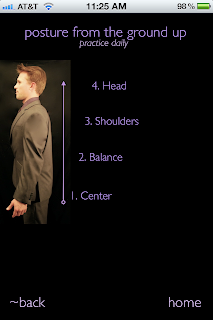Chiropractic ~ chi·ro·prac·tic ~/ˌkīrəˈpraktik/
A system of complementary medicine based on the diagnosis and hands on treatment of misalignments of the joints, more commonly the joints of the spine.
Optimal posture and body position requires a fully functional spine which is able to move freely in every functional direction. The body is able to maintain this potential when it is resting and spending the majority of the day in a neutral position. When the body is positioned neutrally it is able to function with the least amount of abnormal stress, thus giving us an optimally functioning experience.
In daily life our bodies are subject to many unnatural, and abnormal stresses; and body body positions. One of the most common is sitting in conventional chairs for abnormally long periods of time (conventional desk working posture).
Chiropractic as defined above is the diagnosis and treatment of small misalignments that occur constantly because of these abnormal stresses and postures we assume in daily life. When these misalignments are left alone small adhesions start to form as the bodies natural protection mechanism, to stabilize the body preventing more misalignment. Now the joint is less mobile which causes bass and waste products to build up in the joint unable to leave because of the lack of proper movement and hydration of the joint.
The chiropractic adjustment aids in releasing these adhesions, creating movement and allowing movement which pumps out waste and gas build up while bringing in nutrients. The release of gas is what creates the "crackle sound". Now the joint is on its way back to fully assume its natural range of motion.
As you can see the body will continue to react in the same way when experiencing these abnormal positions. This is why chiropractic maintenance or hygiene is so important, it provides your body the ability to assume a natural neutral posture, unhindered by misalignments and adhesions that build up. Proper posture allows the body to move normally the way it was designed to move thus avoiding misalignments and adhesions in its joints.
The spine or the backbone and often regarded as the foundation of the body, what the rest of the body is built upon and relies upon for its communication (spinal cord) and function (it holds the vital organs). Chiropractic spinal hygiene and daily postural awareness go hand in hand with a healthy spine and body that will function optimally for any activity or adventure you want to experience.
Taking care of your body starts with the foundational spine and maintaining it is similar to brushing your teeth daily. Posture how ever is used in every movement and moment of life so it is important that you are educated on how to safely use your body. Reminders to hold your body correctly through the day are your part in keeping your spine healthy and moveable. Visiting your chiropractor for spinal hygiene appointments once a season (four times a year) is especially important if you have a habit of forgetting to maintain daily proper posture.










.jpg)


